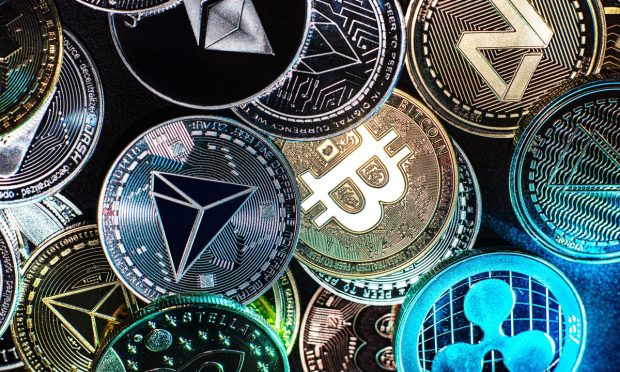Crypto Basics Series: The Tokenomics of Crypto

When crypto folks talk about “tokenomics,” they tend to mean things specific to the design of a specific token that will affect its price. So, things like what’s the maximum number of tokens, how they are mined or minted, and how many the designers are keeping for themselves.
But there’s another, broader way the mash-up of “token” and “economics” can and should be considered: The tokenomics of crypto as a whole.
Interestingly enough for an industry in which “get rich quick” investing is so prevalent at the retail level that one of the first memes for success was “lambo” — as in, “I can buy a Lamborghini” — pretty much no one investing in crypto is looking for a traditional revenue-based profit anytime soon.
Rather, the bet — the long-term bet — is based on supply and demand. Or more accurately lack of supply and demand, as most blockchain project have a hard cap on the maximum number of tokens that can be minted. Bitcoin’s is 21 million, making it, the argument goes, not inflationary — as in, the Federal Reserve can always print more dollars, but bitcoin cannot.
Three Types
We have to pause for an aside here: Other than other bitcoin as a store of value and a few other token types, such as NFTs and stablecoins, most tokens on public blockchains are — the crypto industry argues — what’s called utility tokens. That is, they give access to a good or service provided by that project, such as paying the fee required to save a transaction onto the blockchain.
The other two options are governance tokens, which give a say in the management of the project and are common in decentralized finance (DeFi) and security tokens.
That’s security as in the Securities and Exchange Commission (SEC), which argues that nearly every token — and even some non-fungible tokens (NFTs) —qualifies as a security under its regulatory umbrella. The vast majority of crypto industry developers and financial backers disagree, needless to say. This will ultimately be solved either in Congress or the courts — specifically the SEC lawsuit against Ripple winding its way through the legal system.
Read more: Ripple Lawyer Confident SEC Case Will Wrap in April
The Long Term — Scarcity
Getting back the long-term investment theory of crypto, retail investors in utility tokens are betting — at least in theory — that as a blockchain project gets more popular and gains more users, the growing demand for a limited number of tokens will drive prices up. That applies whether it’s a smart-contract platform like Solana or Cardano, or a metaverse project hoping to attract millions into its virtual reality.
See also: PYMNTS Blockchain Series: What Is Solana?
What’s a Metaverse, and Why is One Having a Fashion Show?
Given the nature and size of the cryptocurrency market — about $1 trillion excluding bitcoin at the time of writing — compared to the actual amount of business done at this point (excluding crypto exchanges) that’s pretty theoretical. And remember, a fair chunk of that business is trading cryptocurrencies.
On the other hand, a fair number of analysts and investors believe blockchain is set to become a huge part of the economy in the next 20 years, transforming scores.
The Long Term — Staking
The other long-term investment theory is staking. At this point, you need to understand how blockchains are governed and managed.
Blockchains are secured and transactions added by people who compete to validate transactions and write them onto the blockchain in two ways: Block rewards of new tokens minted with each block, and transaction fees.
Learn more: PYMNTS Crypto Basics Series: What’s a Consensus Mechanism and Why Is It Destroying the Planet?
In bitcoin and other “proof-of-work” blockchain these are miners competing in a race to solve a puzzle to win the right to mint a block and claim the rewards.
In proof-of-stake blockchains like Solana and all the Ethereum killers, the process works by staking. Essentially, people called validators put a stake of cryptocurrency that is essentially a bond posted for good behavior — do a bad job or act unscrupulously when validating the transactions being added to a new block, and your stake will be “slashed” by the blockchain’s managing smart contract.
See more: PYMNTS DeFi Series: What is Staking?
But more to the point, anyone who owns a PoS token can delegate it to a validator, increasing their stake and their rewards, which are shared with the validators.
There’s a more immediate payoff, but staking’s long-term viability still relies on the blockchain becoming successful — providing the transaction fees needed for staking.
Artificial Adjustment
There are a pair of ways for blockchain developers to put a thumb on the scarcity scale.
The first is known as inflationary rewards, and it bumps the short-term investing rewards at the expense of the long-term payoff. It works this way. Blockchains are secured and transactions added by people who compete to validate transactions and write them onto the blockchain in two ways: Block rewards of new tokens minted with each block, and transaction fees.
As the block rewards are distributed, increasing the total supply of tokens, supply goes up and presumably demand and price down — thus “inflationary” rewards.
There’s a flip side to inflationary rewards practiced by some projects: Deflationary token burns to shrink the total supply of a token and increase its value.
Binance, the world’s largest cryptocurrency exchange, launched the BNB Chain (known as Binance Smart Chain until last month) with a 200 million token maximum, but also pledged to destroy 100 million of them in regular quarterly burns. The size of the burn is calculated based on the number of new blocks produced and BNB’s average price. In January, it burned 1.6 million BNB then worth $750 million.
Read also: PYMNTS Blockchain Series: What Is BNB Chain and Why Isn’t It Binance Anymore?
The Stellar Development Foundation did something similar in a one-off move, burning 55 billion of its 85 billion XLM tokens, from a total of 105 billion lumens.
That works in the short term and, if the blockchain is successful, in the long term.
